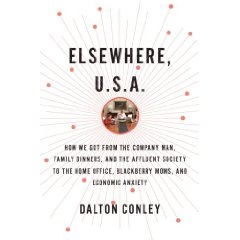At Blogher yesterday, the issue of “addiction” emerged in the keynote. A woman in the audience noted that she twitched for the first day of vacation because she desperately wanted to tweet the things she was seeing and witnessing, like the bald eagle flying by. On stage, the conversation turned so that we talked more generally about being able to take a technology free vacation, but I want to address the tendency to tweet the things we see directly for a moment.
It seems as though humans absolutely LOVE to 1) record the minutia of their lives; 2) (over-) share the details of their experiences. And for some reason, each new technology seems to get used by people to do precisely this. I really wouldn’t be surprised if we found a cave painting that outlined what the dwellers ate for breakfast. So why are we so offended when people use the internet to do this?
Let’s talk about that vacation for a second. Why is it so wrong that people tweet their experiences when it seems to be so right that they spend their vacations stuck behind their fancy new camera recording every moment? Personally, I’m more frustrated by those trying to capture the perfect shot than those who mull over the perfect 140 character version of the event before quickly pumping it into their iPhone. Those behind the camera are far less present than those mulling over the language to express the moment. Yet, somehow, we accept one as the epitome of the vacation while the other is a rupture of it. Why is this?
Then there’s sharing. Sharing recordings of vacation events is also not particularly new. Sure, usually those who were vacationing waited until AFTER the vacation to share, but that was more a matter of practicalities. If you needed to get the film processed, you had to wait till you got home. But sharing events is a part of bonding, whether its an oral accounting of those events or a sharing of the recordings of it. One value of sharing records is the ability to share in a way that goes back to that time period.
For example, my grandfather has this brilliant album from the early 1940s when he first came to the States to train American pilots for the war. I’m fascinated by what he recorded – and what he didn’t. The album is filled with images of 1940s Georgia and Texas, young British men goofing off before facing their most harrowing hour back in Europe. (My grandfather was a bomber pilot; he lost most of his friends and was shot down himself.) What I particularly love about this album is his little drawings, the white pencil on black background that makes it clear that he put this album together to really record this period in time, a period that he thought would be his only trip to America. I can page through this album forever.
We like when people share their records. Until we don’t. Cuz we also know that there is the notion of Too Much. There are only so many baby photos you can take of a baby that’s not related to you before you scream Too Much. There are only so many home videos that you can take until you scream Too Much. And there are only so many vacation photos you can take until you scream Too Much.
Y’see… the ease with which we can record and share today means that there are too many people around us who push our Too Much limits. There was something beautiful about only being able to photograph 24/36 images on the entire vacation. I can stomach 24/36 images of anyone’s vacation. But who in their right mind thinks that I want to sift through 1000s of photos just because they were able to take them? Hrmfpt I say.
Can we please have a moment of silence for the power of constraint? Kthx. The issue with recording and sharing in contemporary society is that is far far far too easy to go overboard. This is where we struggle to find balance. Just because you can share every detail doesn’t mean you necessarily should. Just because you can record every moment of your day doesn’t mean you should. Part of the problem is that the technology doesn’t force you to think about your audience. When your mother brings out the photographs of your childhood, she can watch you squirm when you’ve had enough (usually after the third photo). She may ignore you, but she knows. But what does it mean that we are unable to see – and thus able to ignore – our audience online? When people bitch about folks sharing what they ate for breakfast, they’re noting that this kind of sharing of minutia is clearly ignorant of the annoyed audience in preference for the ability to record everything.
We keep building technologies that allow us to do what we like to do better, faster, more efficiently. The practices of recording and sharing are not new and we seem to love technologies that aid in these practices. As for vacation… well, recording and sharing vacations are also not new even if the newfangled technology allows us to do this better, faster, more efficiently. And, personally, I’m totally with the audience member who expressed the need to put away the technology (including the camera!) and be in the moment. But I should also take a moment to highlight that there are very good psychological reasons for wanting to record and share our vacations.
The processes of recording and sharing help make things “real” by expanding their significance in our lives. These are tools to aid us in building memories. We forget most moments in our lives, but when we record and share, we take the steps to solidify these memories. Vacation is a luxury and it’s (usually) filled with happy times that we want to remember. So when we record and share, we seek to keep these memories close. I cannot fault people for wanting to do this (especially in a country where people get so little vacation on average). I understand the desire to just be present on vacation, but I also understand why people are so determined to lock down these memories and contribute positive stories to the information flow of their friendships. I can’t fault them for this, even if I’d prefer that we all took a break and just enjoyed the moment. So before we mock those who are documenting their memories through the crazy new technologies, let’s also recognize that this is just one in a long line of recording and sharing tools. And, I would argue, not the most annoying one yet.


